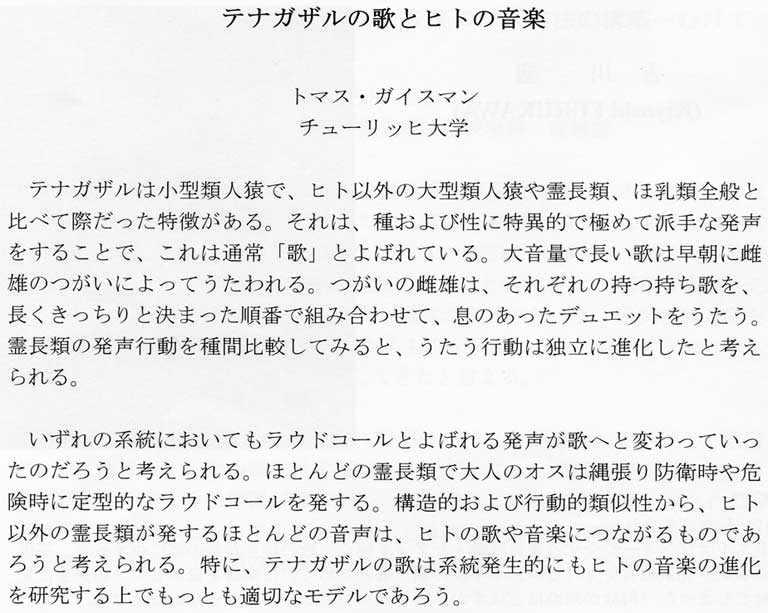
Geissmann, T. (2008). [Gibbon songs and music]. In Koizumi, H., and Okanoya, K. (eds.), [Symposium on Art and Brain Science II: Evolution of music and brain science. Phoenix Plaza, Ginza, Tokyo, 30 August 2008: Abstracts], Seizon-Kagaku Institute, Tokyo, pp. 8-9 (Japanese abstract only).
Thomas Geissmann
Anthropological Institute, University Zürich-Irchel, Switzerland
The Gibbons (Hylobatidae) are small apes which differ from the great apes and most
other primates and mammals by producing elaborate, species-specific and sex-specific
patterns of vocalisation usually referred to as "songs". The loud and long
song bouts are preferentially uttered in the early morning hours and mostly exhibited
by mated pairs. Typically, mates combine their repertoire in relatively rigid, precisely
timed, and complex vocal interactions to produce well-coordinated duets.
A cross-species comparison reveals that singing behaviour evolved several times independently
in the order of primates. Most likely, the so-called "loud calls" were
the substrate from which singing evolved in each line. In most primate species, adult
males produce specific, relatively stereotyped loud calls in territorial or alarming
contexts. Structural and behavioural similarities suggest that (1) of all vocalizations
produced by nonhuman primates, loud calls of Old World monkeys and apes are the most
likely candidates for models of a precursor of human singing and, thus, human music,
and (2) gibbons are the best model to study the evolution of music because they,
among all singing animals, are the closest relatives of humans.

![]()
Site by Thomas Geissmann.
For comments & suggestions, please email to
webmaster@gibbons.de
| Gibbon Research Lab. Home: |